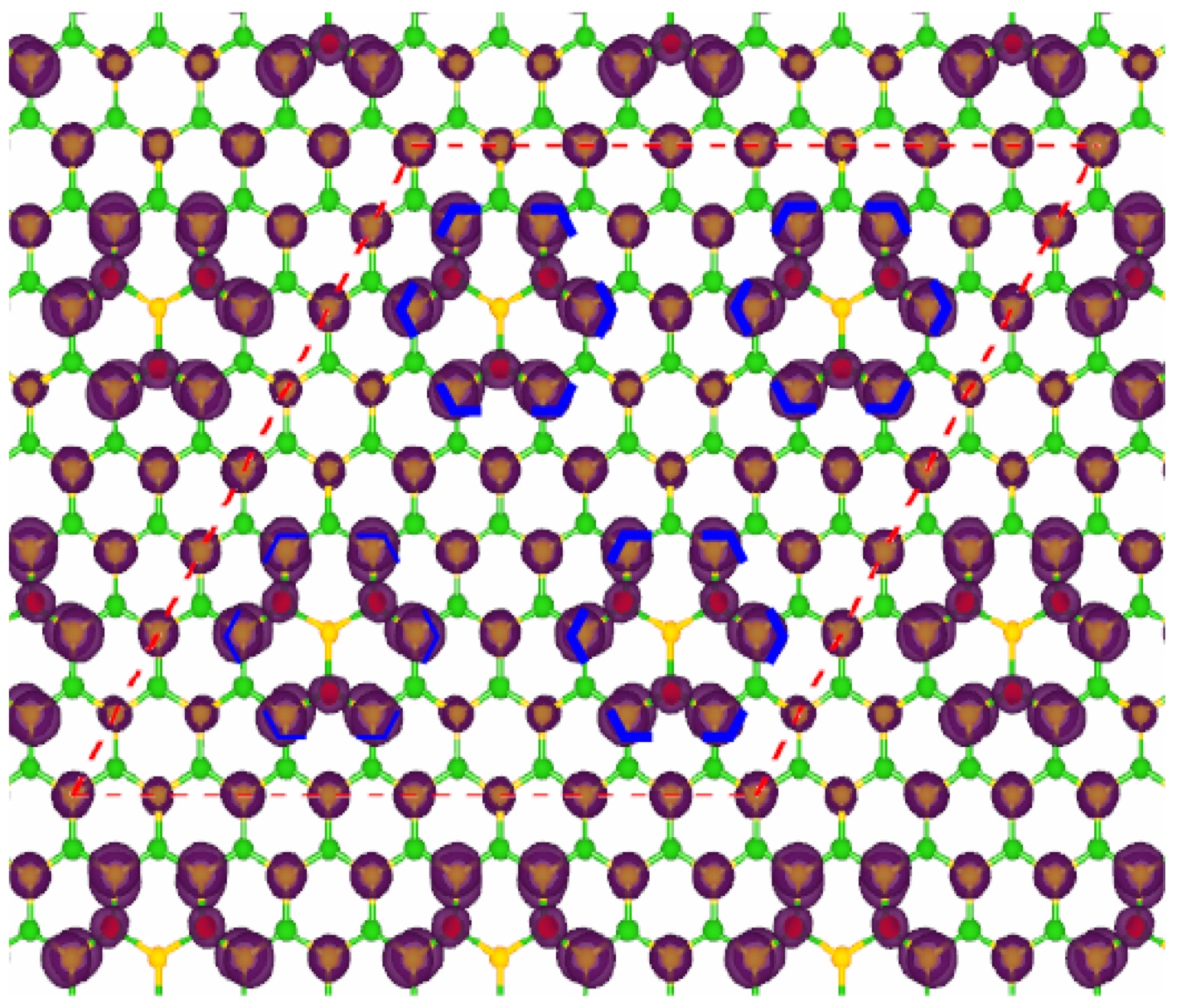
A density functional theory calculation showed the magnetic properties of a fluorinated sample of hexagonal boron nitride. This version is ferromagnetic, determined by how the fluorine atoms (red) attach to the boron and nitrogen matrix. Courtesy of the Ajayan Group.
Adding a small amount of fluorine could turn white graphene into a semiconductor with magnetic properties, making the material suitable for electronics, even in extreme conditions.
The researchers, who are from Rice University, turned two-dimensional hexagonal boron nitride h-BN, known as white graphene, from an insulator into a semiconductor.
The material is an exceptional conductor of heat, suggesting that it could be used for electronics in high-temperature applications including magnetic memory devices.
“Boron nitride is a stable insulator and commercially very useful as a protective coating, even in cosmetics because it absorbs ultraviolet light,” Rice materials scientist Pulickel Ajayan, said in a statement. “There has been a lot of effort to try to modify its electronic structure but we didn’t think it could become both a semiconductor and a magnetic material.
“So this is something quite different; nobody has seen this kind of behavior in boron nitride before,” he added.
By adding fluorine to the white graphene, the researchers found defects in its atomic matrix that reduced the bandgap by about 5 percent, enough to make it a semiconductor.
“The electrophilic nature of fluorine causes changes in the charge distribution around neighboring nitrogen atoms in h-BN, leading to room temperature weak ferromagnetism,” the study states. “The observations are further supported by theoretical calculations considering various possible configurations of fluorinated h-BN structure and their energy states.
“This unconventional magnetic semiconductor material could spur studies of stable two-dimensional magnetic semiconductors. Although the high thermal and chemical stability of h-BN have found a variety of uses, this chemical functionalization approach expands its functionality to electronic and magnetic devices.”
The researchers determined that applying tension by invading fluorine atoms altered the spin of electrons in the nitrogen atoms and affected their magnetic moments—the quality that determines how an atom will respond to a magnetic field like an invisible, nanoscale compass.
“We see angle-oriented spins, which are very unconventional for 2D materials,” Rice graduate student and lead author Sruthi Radhakrishnan, said in a statement.
The spins are randomly angled, enabling the flat material to form random pockets of net magnetism that can exist in the same swatch of white graphene.
The study was published in Science Advances.




